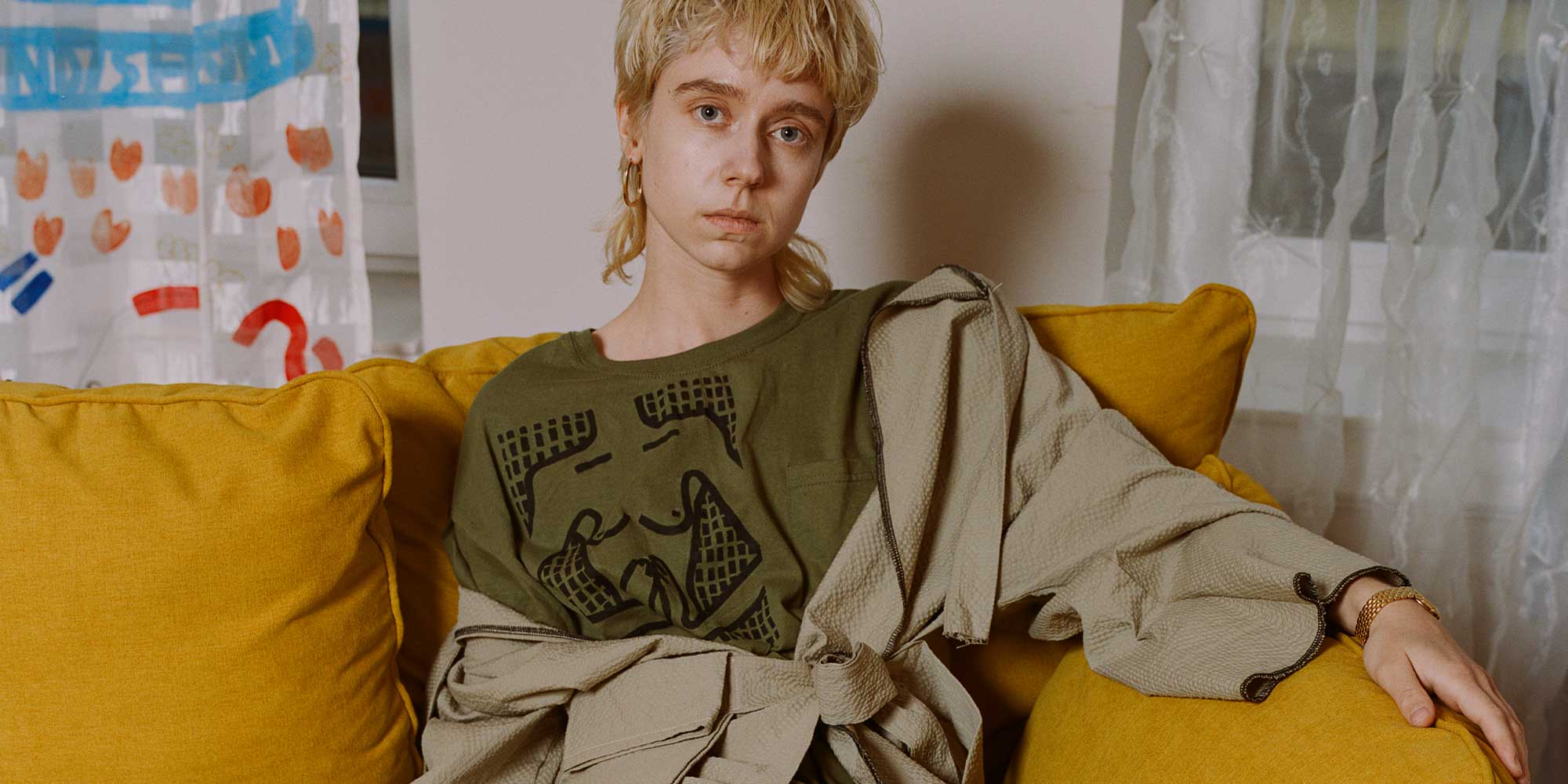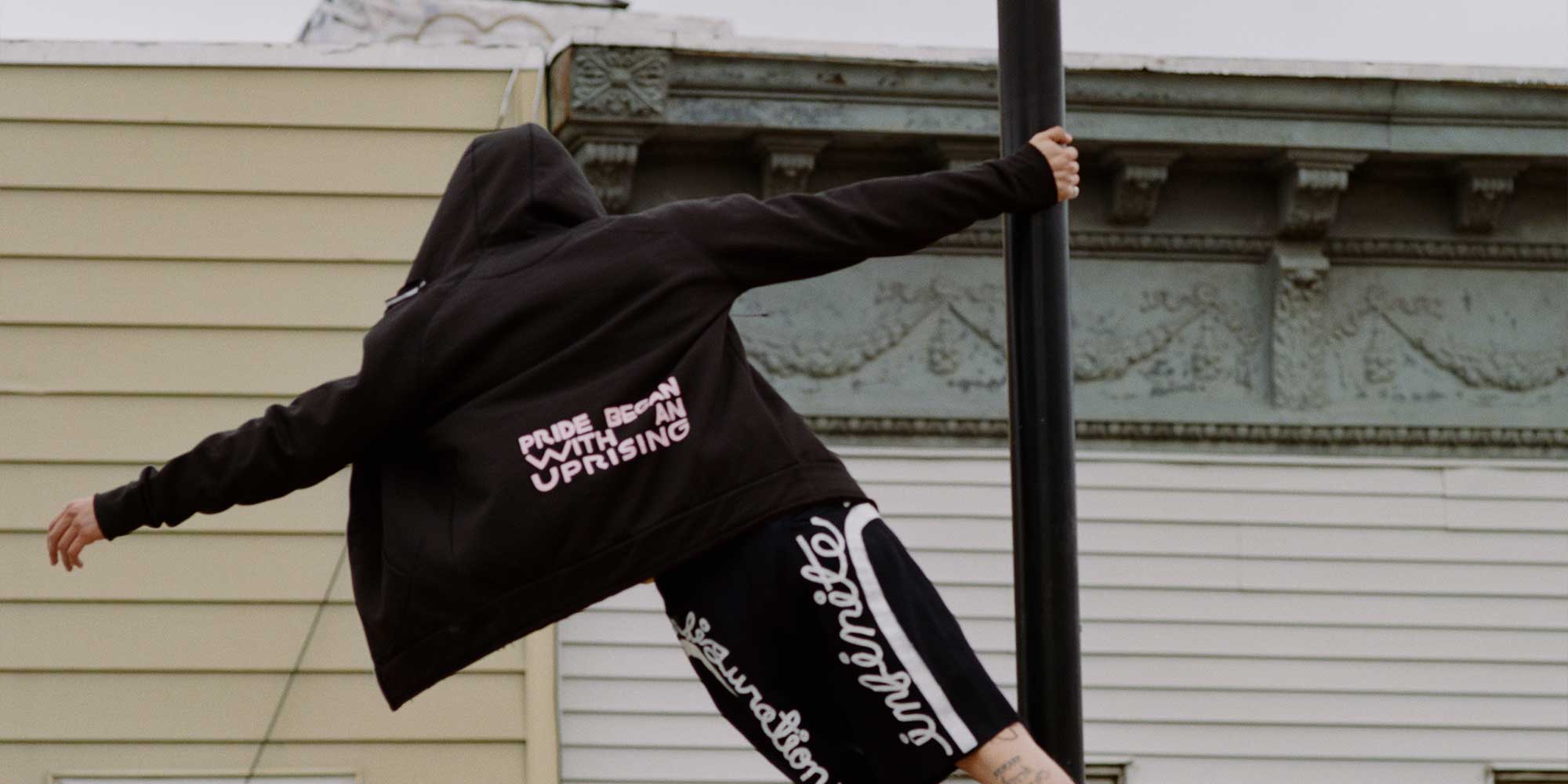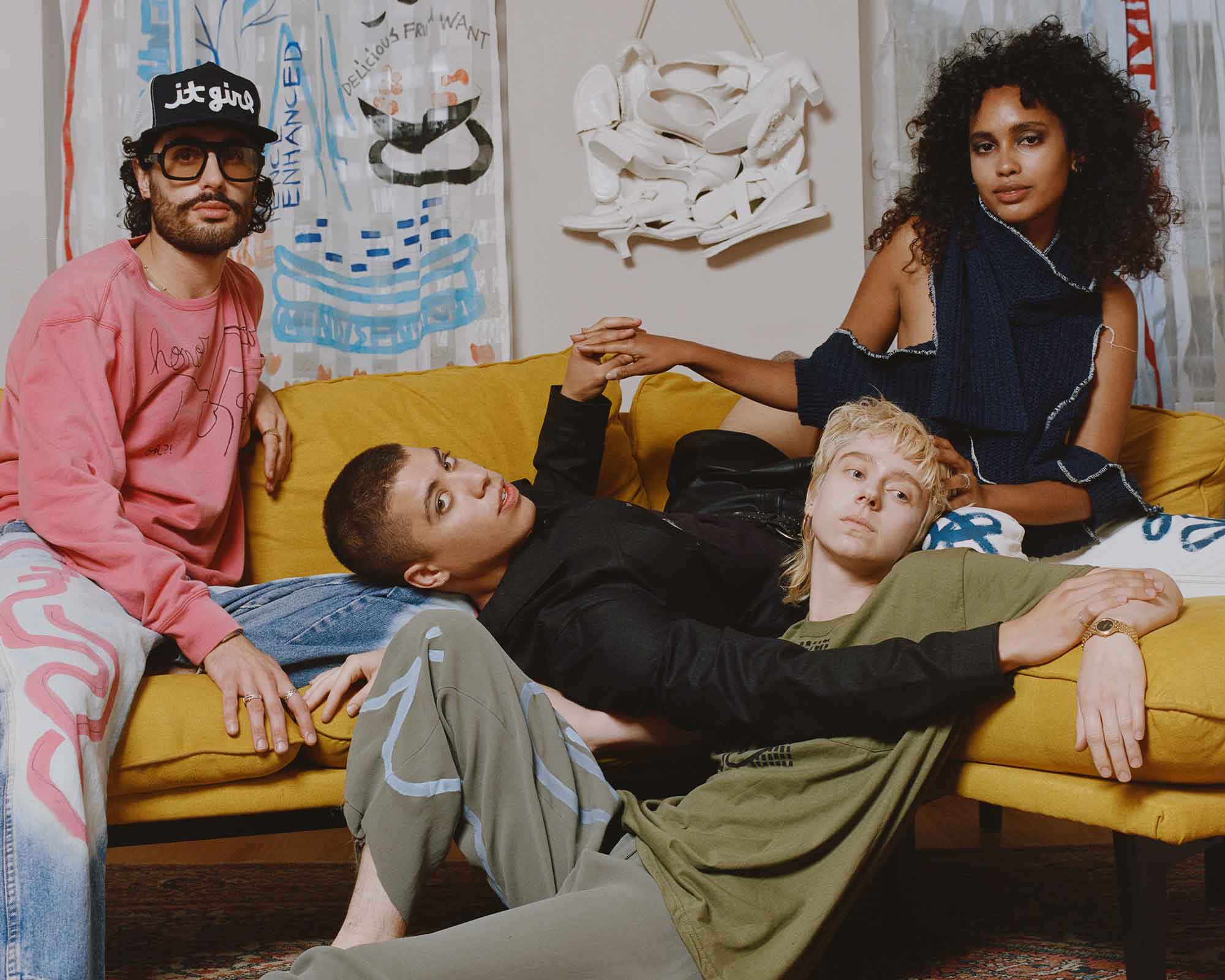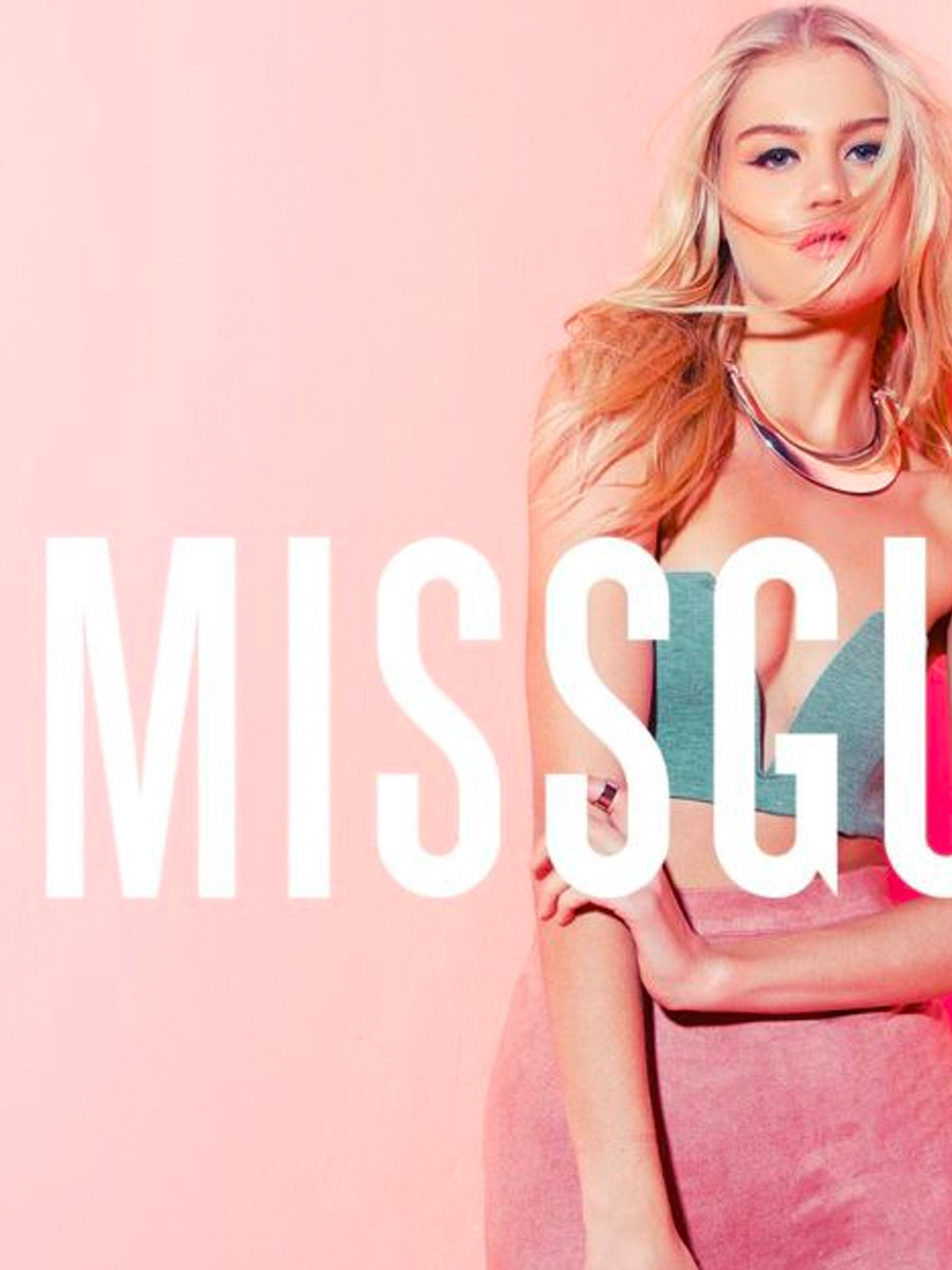Welcome to our Q&A series where we talk to activists, designers, artists, and organisers about the big issues in sustainable fashion. We’re sitting down with MI Leggett, who gives new life to abandoned clothes in protest of fashion’s waste problem.
‘Anti-waste’ + ‘Gender-free’
When we talk about modern fashion’s ‘linear economy’, what we really mean is that you can trace a distressingly clear line from sweatshops to landfills. Added together, the most profitable brands produce billions of new garments every month. And even if those clothes get donated to thrift stores, many eventually end up in mountains of rubbish—often in countries like Ghana, where fashion’s endemic wastefulness causes environmental catastrophe.
Artist and designer MI Leggett envisions a more circular future. Under the moniker Official Rebrand, Leggett takes fashion’s leftovers and gives them new lives. For this ongoing project, they’ve sourced discarded and abandoned clothing from closets, factories, and even the free boxes in college dorms. Then, they alter and “rebrand” those garments with their striking hand-painted designs. Over the past few years, their upcycled clothing has earned a cult following on Instagram, been worn by celebrities such as Billy Porter, and appeared at New York Fashion Week’s 2020 ‘Men’s Day’ with a subversive genderless show titled ‘What is a Man?’
Leggett’s work is a protest to fashion as usual in more ways than one. He coined the term ‘anti-waste’ to describe his ethos, which he also defines as ‘gender-free’. In other words, transness and queerness are central to his concept of sustainability. We recently sat down with Leggett to learn more about his sourcing process, his affinity with Berlin’s creative scenes, how to get into upcycling, and the link between queerness and sustainability.

6 Q&As on protesting fashion’s status quo
1. Q: You started questioning the fashion industry’s status quo in college, creating your first designs in your dorm with students’ discarded garments. What were some of the formative moments that shaped your creative vision?
A: I’ve always been really into transforming things that people might consider excess or waste and making them into something unique and beautiful.
A creative breakthrough for me was when I was living in Berlin and working for the designer Fábio M Silva, who had me paint on clothes. The moment that I put a paintbrush onto a t-shirt, I was like, whoa, I really like doing this. And as a nonbinary person, while I wasn’t out yet, I had never really found clothes that felt like myself. Taking this finished object and just deciding it was not done yet, that I could make it totally my own, was really empowering. I was completely hooked.
So after leaving Berlin, when I was back for my senior year at Oberlin College, I decided to make my thesis about the theories behind some of these ideas I was exploring. I based it on the writings of Judith Butler and thinking about the differences between art and fashion and consumerism—using these as a way of opening doors to queerness, self-expression, and gender.
2. Q: Let’s talk about your sourcing, as it’s central to your design practice: Where do the garments and materials you work with come from?
A: When I was in Berlin, there was a big culture of leaving clothes on the street if people didn’t want them anymore. That’s where a lot of my material came from then. Back at Oberlin, I started sourcing discarded clothes left by other students. There would be a free box in every dorm. The stuff that hadn’t been taken from the free boxes would eventually be put into this room, and I would take clothes from there.
Since being in New York, I source from leftovers: I get a lot of donations from people who are clearing out their closets. They’ll just give me trash bags full of clothes, and that can be really great. And for a lot of my work lately, I’ve been using the inventory left after a luxury sportswear brand went out of business. I do most of the painting and alterations myself, but working with deadstock can be cool since I can make multiple pieces at once.
3. Q: You mentioned deadstock, which is a telling symptom of the much larger problems in fashion like overproduction and overconsumption. What does that waste tell us about the fashion industry’s impact?
A: So much of the industry is founded on these external costs. Brands too often put the cost on the environment and put the cost on the workers. You don’t always see that cost reflected in the prices of the clothing. People have become really desensitized to clothing prices with the likes of Forever 21. Fast fashion has really distorted people’s perception of the value of work. And the value of creating objects with virgin materials. These brands know they need to feign an air of environmental consciousness if they want to stay relevant. But they’re often not addressing those external costs to the environment and to workers. It’s really disheartening.
Fast fashion has really distorted people’s perception of the value of work. And the value of creating objects with virgin materials.
MI Leggett

4. Q: The sheer amount of new items dropped by many eCommerce sites on a weekly basis has led to countless stories of small designers’ work being stolen. You recently suffered that yourself. What has that experience shown you about the way fashion operates today?
A: It’s horrifying, and it’s just part of their business model that they know that they’re too big to get sued. Brands could just give credit where credit is due and pay people for their creative work. But to produce things so cheaply, their R&D is just stealing—it’s not nurturing artists. I was very sad to see that there were originally two eCommerce companies that were selling my shirt. I checked a week later, and there were ten more. I’ve pretty much had to be my own lawyer, sending cease and desist letters to all of them. It’s flattering in a way that people think this shirt—the “angels have no gender but lots of sex” shirt—is worth copying. But it shows you how these business models are based on stealing people’s ideas, people’s labour. It goes back to the problems with the entire system as it is.
5. Q: People are increasingly aware of greenwashing and are increasingly sceptical of the sustainability claims we see from many major brands. What does that mean to you as a designer, with so much of your practice focused on protesting that system?
A: It’s one of those things where if you have a big enough marketing budget and people to spin things however you want them, brands can craft their public perception to be completely different than what it actually is. I’m very sceptical when I see big brands who are like, we’re going to shoot some people in a field, and there will be raw cotton. It’s like they’re just trying to trick people into thinking they’ve changed, but all they’ve really changed is the packaging and marketing. What something claims to be isn’t necessarily what it is.
That’s why for the past two Earth Days, myself and [hand-painted, gender-free label] HECHA / 做 have released an anti-greenwashing zine that has different articles, skill-sharing, tutorials, and essays. It’s tips and tricks on things like making your clothes last longer and properly washing them. It’s sort of a manifesto about greenwashing, how to avoid it, and what to look out for as a consumer.
6. Q: You define your work as both ‘anti-waste’ and ‘gender-free’. How do you describe the connection between those two concepts—de-gendering fashion and true sustainability?
A: There are a lot of different ways I think about that. On a material level, I see being queer as being against the norm and rejecting the overarching expectations of society. And by transforming something that society said was done and rebirthing it and giving it a new life—that feels inherently queer to me. There’s a material fluidity that I think about there, transforming and making something into what works for you as opposed to what works for these systems of binary clothing and the binary structure of society. That feels like an inherent connection.
Another thing I think about is how all these systems of oppression are so tied together. So all the strides that we’re making in some parts of the world for queer rights, we’re not going to be able to continue to do that—to liberate people in every country and in every socioeconomic bracket—if we’re all on fire and don’t have any water to drink. I envision a world where everyone can have the freedom to be who they are. But that can’t really happen if we’re going to have a climate apocalypse. So we all need to know that our futures are bound up together, and that solidarity is the most important thing.
View this post on Instagram
Author bio:
JD Shadel is a London-based journalist, editor, and strategist, whose writing appears in The Washington Post, Condé Nast’s them., VICE, BBC News, Bloomberg, and many other outlets. Their work often centres on issues of justice and the experiences of LGBTQ+ people. In 2017, VICE editors named their reporting on historical queer activism among the “Best Writing of 2017″, and they’ve played leading roles in projects and publications honoured by the U.S. Travel Association and the Webby Awards. At Good On You, JD serves as Head of Content, building on their decade of experience in community-driven digital media and a lifetime of second hand shopping. (Author photo by Celeste Noche.) Find them on Twitter and their website.
















